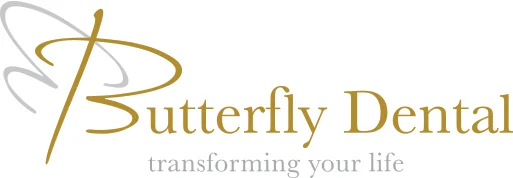Stepping into the toothbrush section of your local supermarket or pharmacy can be a daunting prospect sometimes, with such a vast range of products available to choose from. Large brushes, small ones, hard bristles, soft bristles, brushes with special rubbery bits and bobbles on the end...where do you start? Move onto electric toothbrushes and you reach a whole other level; some have different modes and timers, some connect to apps on your phone to assess your brushing, and there are some pretty radical designs, one model I’ve seen advertised even has silicone bristles! At Butterfly Dental we get many patients seeking our advice on which toothbrush will be best for them, so in this blog we’ll have a look at different kinds of brushes and what they can do for you.
Manual Brushes
These are the most commonly found toothbrushes, and also the cheapest. Whilst we would not recommend a really basic value-level toothbrush, as often the heads are too large for most people and the bristles are not always as durable, you don’t necessarily have to splash out on one with all the aforementioned rubbery flexy bits and bobbles – that’s purely a matter of personal preference. Some people really appreciate the extra features, for example having a rubbery side on the end of the brush for tongue cleaning, but it’s not strictly necessary.
The main things to consider are the size of the toothbrush head and the variety of the bristles. It’s important to ensure the toothbrush head is small enough to reach all tooth surfaces, especially right towards the back of the mouth. For most people this means a toothbrush head just under an inch long and half an inch wide. It can be tempting to buy a toothbrush with hard bristles, thinking that these will give you a better clean. The reality is that it can cause damage to your gums and the enamel of your teeth over time, causing sensitivity. For most people, soft or medium bristles are what we recommend.
The angulation of the bristles doesn’t make a huge difference, it’s technique that’s key here – try and point your brush towards your teeth and gums at a 45 degree angle to ensure you brush around and under the gum line, where plaque can accumulate.
Electric Brushes
Whilst electric powered toothbrushes aren’t a necessity, there’s a lot to be said for them. Manual toothbrushes are perfectly fine, but how effective they are depends heavily on your toothbrushing technique. An electric toothbrush does a lot of the work for you – as long as you hold it onto each and every surface of your teeth and make sure you include brushing around the gumline, you can’t go far wrong. Some models now even have a pressure sensor to warn you if you’re brushing too hard, eliminating the issue of overbrushing and the problems mentioned previously, like gum recession and enamel wear.
The downside obviously is that you need to make sure it’s charged regularly for it to do its job! I’m sure I’m not the only one who’s gone away for a week somewhere hot and sunny, only to find I’ve forgotten my toothbrush charger, and it feels really strange to get to brush with a regular toothbrush after being used to an electric toothbrush.
Electric toothbrushes aren’t for everyone. Some people just don’t like the feeling of the vibrations or find the various accessories and frequent recharging a nuisance. But for people with mobility issues, like arthritis, they can be hugely helpful. The novelty of various features on some models, such as timers and connectivity to toothbrushing apps on your phone, can also be an excellent motivator for people who might need a bit of encouragement, such as teenagers or busy people who travel a lot and might struggle to make brushing a consistent part of their routine. Electric toothbrushes do cost more than manual toothbrushes, but you may find that it helps you to brush more effectively, leading to a decrease in the cost of your dental treatment long term.
In short, there’s no ‘one size fits all’ solution, as everyone has different needs and preferences. It is important to find a brush you find comfortable and easy to use – that way you’re more likely to use it! But if you ever need advice on which kind of toothbrush is best for you, make sure to ask at your next appointment and we’ll do our best to point you in the right direction so you can find something that suits you personally.



